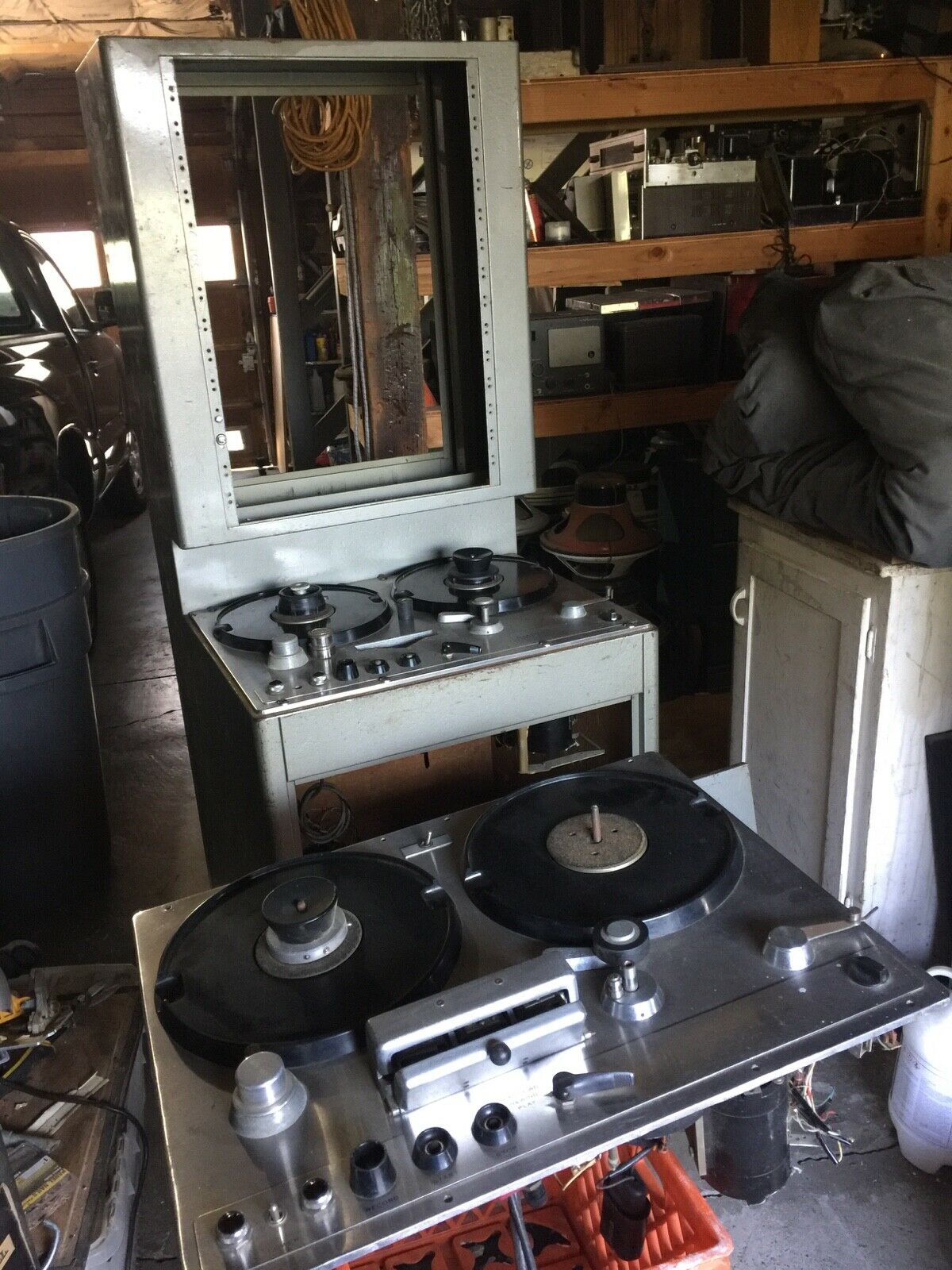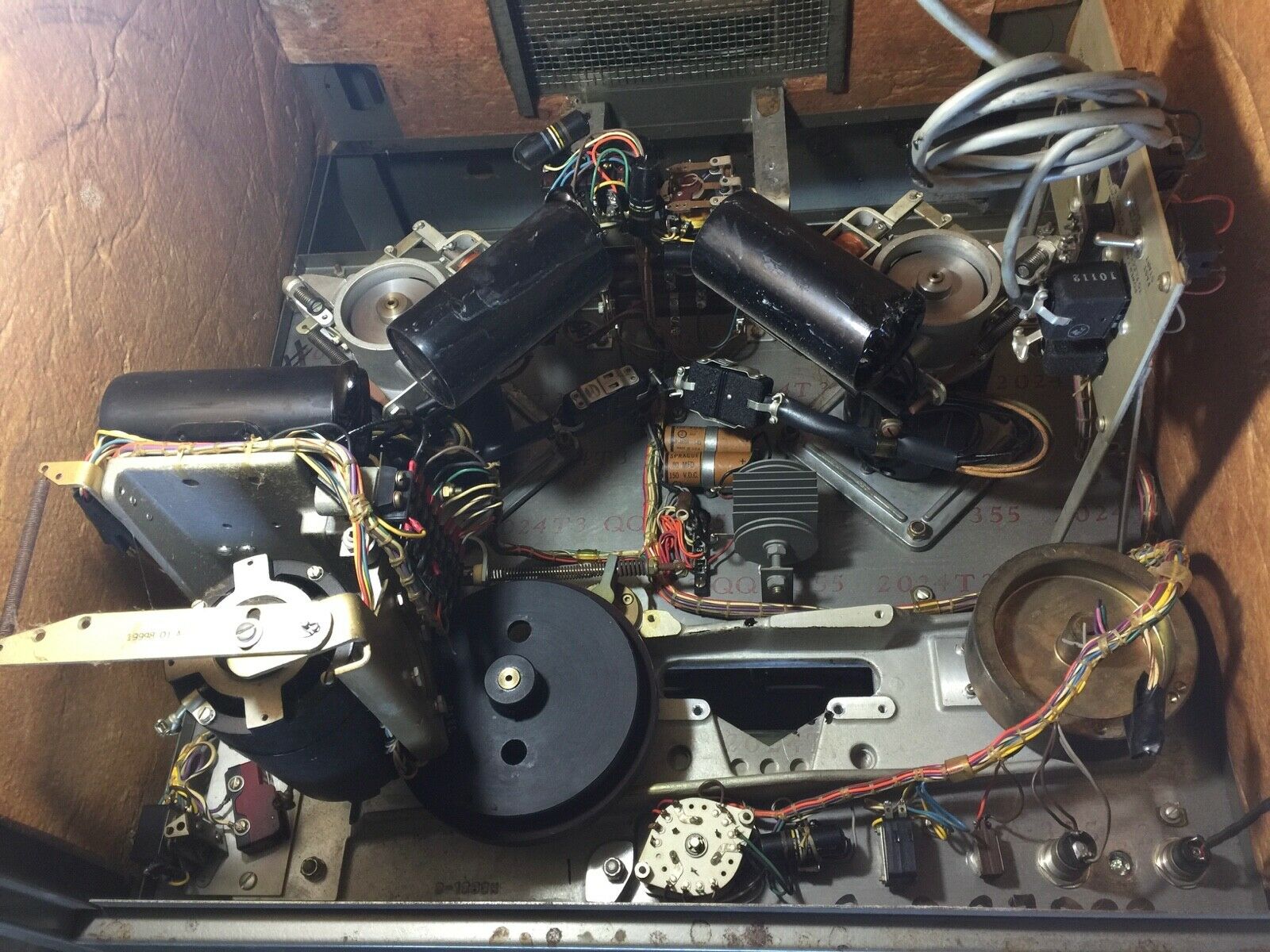-40%
AMPEX MODEL 300 TAPE RECORDER FOR PARTS OR RESTORATION
$ 343.2
- Description
- Size Guide
Description
Untitled DocumentAMPEX MODEL 300 TAPE RECORDER
This
Ampex 300 tape recorder was purchased from Bernie Grundman and Michael Hobson of Classic Records in the late 90s.
This machine is listed
’as-is’ for parts or restoration only
.
It does not run
but
it is restorable
and probably wouldn’t be that much work or expense.
There is no head block in this machine - the 3-track
head block was removed and is listed in another ad.
The underside of the tape recorder is shown in one of the photos.
This ad is only for the tape recorder itself and does not include the roll-around cart shown in the photos.
A second ‘loose’ Ampex 300, visible in the photos, has been listed in another ad.
The
65” x 28” by 25”
roll-around rack/cart is also listed in another ad.
I prefer pickup in San Francisco but will ship the tape recorder to any address world-wide serviced by UPS or USPS.
Unfortunately the roll-around cart is too tall to ship internationally via USPS, UPS or DHL but a freight forwarder would be able to handle it.
The tape recorder itself measures 25” x 19” x 14” and it weighs 45 pounds. A shipping crate will be needed unless the buyer picks up the machine in person.
The model 300 is too bulky and too heavy to be packed in a cardboard box but I can build a sturdy plywood shipping crate for 0, if it needs to be shipped.
The first production Model 300 was shipped in the late spring of 1949
.
At the time all performance characteristics of the Ampex Model 300 Magnetic Tape Recorder equalled or exceeded the standards of the National Association of Radio & Television Broadcasters. All Ampex audio recorders reproduced a tape frequency characteristic which had been accepted as standard by the NARTB.
Harold Lindsay designed the mechanical parts and Frank Lennert designed all of the electronics of the Ampex Model 300,
including the record/playback electronics.
It used 10.5 inch reels, 1/4-inch tape facing inward, and was a two-speed machine switchable to either 7.5 or 15 ips.
Harold designed a new head that, when compared to the one for the 200A, was less expensive, performed better and was more uniform from head to head.
The new head made tapes more easily interchangeable from machine to machine than was possible between 200A recorders.
A 15/30 ips version, the Model 301, was introduced shortly after that. The 300 transport became the platform for many versions of both audio and instrumentation recorders. Overall about 20,000 of these transports were produced.
Tapes were not interchangeable between the 200A and the 301 due to several factors. First, the tape on the 200A had the oxide facing outward, whereas on the 301 it faced inward. Second, the record equalization was different, and the 301 was designed to use 3M 111 tape instead of 3M 112 tape that the 200A used.
The Model 301 had better frequency response, lower noise, and lower flutter than the 200A. Sales of the Models 300 and 301 quickly outstripped those of the 200A, which was soon phased out; in the end, a total of only 112 Model 200A recorders were manufactured and shipped.













